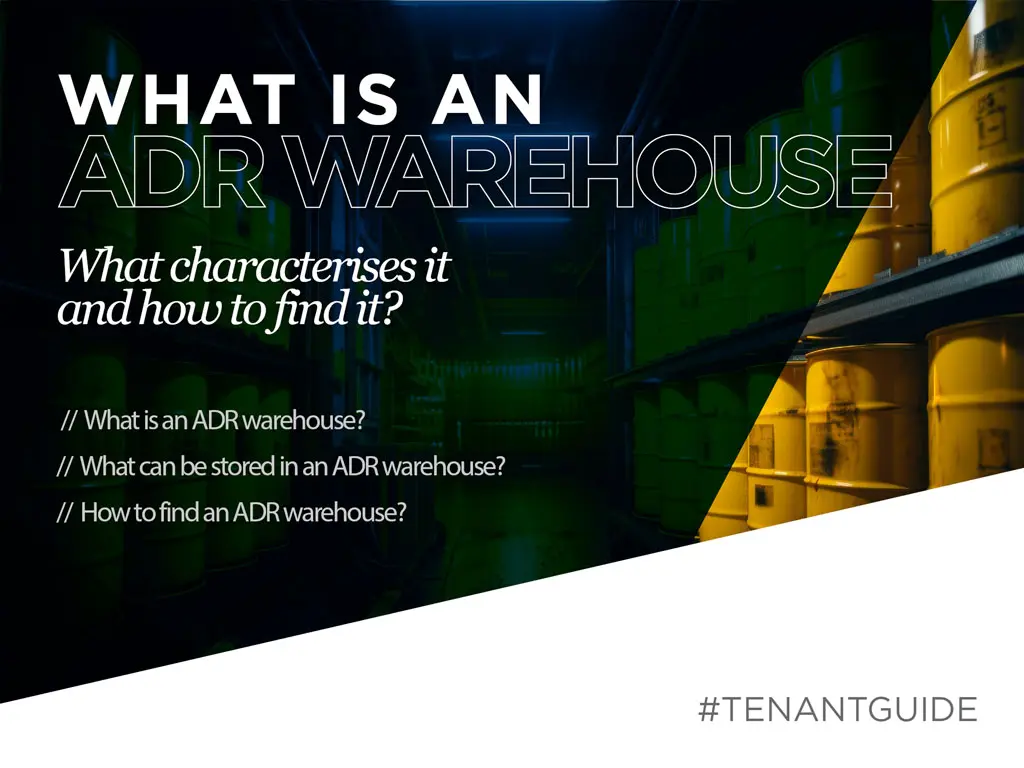What is an ADR warehouse? And how to find one?
17 august 2023

Contents
What is ADR?
First things first, what does the abbreviation ADR stand for? It comes from French (L’Accord européen relatif au transport international des marchandises dangereuses par route) and stands for the “European Agreement concerning the International Carriage of Dangerous Goods by Road”.
It is an international treaty drawn up and published by the Economic Commission for Europe’s Committee on Inland Transport. Ratified by Poland in 1975, it regulates the carriage by road, storage and handling of hazardous materials such as chemical, radioactive, flammable, toxic, corrosive and other substances.
What is an ADR warehouse?
Notably, there is no definition of an ADR warehouse in official legislation. There is even no mention of it in legal documents on warehousing and storage of dangerous goods. So, it appears to be uncharted territory. An ADR warehouse is, however, a term used by logistics specialists and practitioners. It simply means a place where dangerous goods are stored.
An ADR warehouse must provide appropriate conditions for storing individual classes and subclasses of hazardous materials. It must offer appropriate premises, containers, packaging, racks and safety systems to minimize the risk of leaks, fire, explosion or other dangerous incidents.
As might be expected, an ADR warehouse must be appropriately adapted to store hazardous materials. It must comply with all building law and fire regulations, and frequently with the standards in force at a given site to minimise potential risks. Every warehouse must have appropriate hazard warning systems, a procedure in place for putting out fires of hazardous materials stored in it and all the required extinguishing solutions such as in-rack or ceiling sprinklers and fire extinguishers. Other must-haves include a plan of action for dealing with hazards, systems preventing releases of hazardous substances to the environment, regular communication between employees and first aid kits. In addition, those working in such a place must be appropriately qualified and trained and be familiar with health and safety regulations.
What can be stored in an ADR warehouse?
What are hazardous materials? These are materials posing a risk to safety, life, health or property. All goods are divided into classes and risk groups. According to the Regulation of the Minister of Internal Affairs and Administration of 7 June 2010 on the Fire Protection of Buildings, Other Structures and Sites, hazardous materials include the following:
● flammable gases,
● flammable liquids having a flashpoint of less than 328.15 K (55°C),
● materials which in contact with water produce flammable gases,
● materials igniting spontaneously in the presence of the air,
● explosives and pyrotechnic articles,
● materials liable to spontaneous decomposition or polymerization, and
● materials liable to spontaneous combustion.
How to find an ADR warehouse?
Looking for ADR warehouses can be quite a challenge. For safety reasons, information on their location is sometimes classified or restricted or available to authorised individuals only. If you are, however, looking for one, you are advised to contact industry organisations and associations or logistics providers focusing on transportation of hazardous materials, or an advisory firm with relevant expertise. They frequently have information on ADR warehouses and may provide some guidance on their location. Alternatively, you may also turn to a real estate advisory firm specialising in warehouse leasing. A team of experts with extensive knowledge and market insight is able to identify possible warehouse locations and provide you with an invaluable support.
Get in touch with us!
Read also: How to prepare for a change of warehouse location


